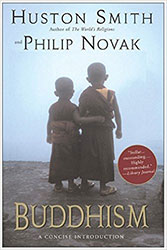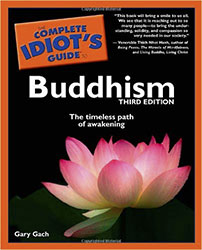A Brief Introduction to Buddhism *
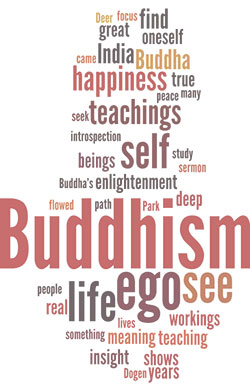 In a nutshell, Buddhism is a teaching that shows us the workings of our ego self and how that ego self causes us all of our problems of life.
In a nutshell, Buddhism is a teaching that shows us the workings of our ego self and how that ego self causes us all of our problems of life.
Our normal reaction to such a statement is, “What me? I don’t have an ego.” This is exactly why we need Buddhism, because we cannot see the workings of our ego and how it causes us so many problems in life. Just as we cannot see our physical self, like our own face, without the help of a mirror, Buddhism teaches us that our ego self is impossible for us to see ourselves. Buddhism is a teaching that shows us our ego self, and then shows us the path to being liberated from the workings of that ego.
We might think, “Well, sometimes I have an ego, but not most of the time. And certainly not as much as so and so.” When we begin to talk about ego, right away someone comes to mind: our boss, or mother-in-law, our teenage son or daughter, our neighbor that we dislike, but not ourselves. This too is a reflection of how hard it is to see our ego.
Buddhism: A teaching of self introspection
The focus of Buddhism is oneself, not in a self-centered manner, but to reflect within oneself, instead of looking critically at others. The great Zen Master, Dogen, said, “To study Buddhism is to study the self.” By this, Dogen pointed to the central focus of the Buddhist teachings, which is to see into oneself.
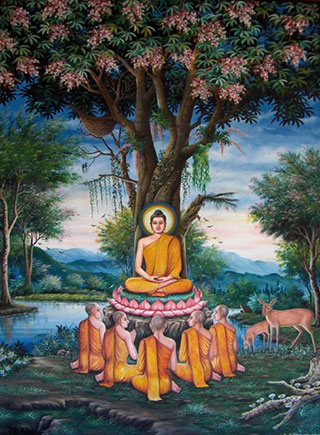
The Historical Buddha
Buddhism begins in India, nearly 2600 years ago, with a man who did exactly that, looked deep into himself. Through such deep introspection, he came to realize a profound truth. He came to see the world around him beyond the ego-centered viewpoint. This insight allowed him to see the great oneness of life, the interconnectedness of all beings, animate and inanimate. It was the insight of great wisdom and compassion, the contents of enlightenment. Through his enlightenment, the Buddha discovered the real meaning of peace and happiness in life. After his enlightenment, the Buddha shared his insight and teachings with the people of India for the next 45 years.
The Spread and Development of Buddhism
From India, the teachings of the historical Shakyamuni Buddha spread throughout India, and then across the Asian continent over the course of these past 2600 years. Buddhism flowed into China, Korea, and Japan. It flowed into Sri Lanka, Thailand, Burma, and Viet Nam. Now the flow of the Dharma is reaching and ebbing into the thought and lives of people in the West.
The Purpose of the Buddha’s Teachings
Buddhism has been carried and transmitted over the many centuries because of its timeless and enduring message to the spiritual needs of man. The Buddha’s teachings seek to help all beings find true peace, happiness, and well-being. It does not require that we follow doctrines, beliefs, or creeds, but simply encourages us to listen to the Dharma (teachings), and that if we find them to be true through our own life experiences, then to follow them.
The path of true happiness
All beings seek to be happy, but we don’t always know where to find it. Actually, Buddhism teaches us that we look for it in all the wrong places. True happiness is not something we can find outside of ourselves, but it is something that we can discover within ourselves.
The way of life of Buddhism is this unfolding of discovering the real meaning of happiness, the real meaning of our lives and our existence. It enables us to live a dynamic and fulfilling life, a life of deep gratitude, reverence, and humility.
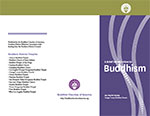 * The preceding text is from a brochure entitled “Introduction to Buddhism” published by the Buddhist Churches of America, Southern District Ministers’ Association. The author is Rev. Marvin Harada, Orange County Buddhist Church. Used with permission. The complete set of brochures is available online.
* The preceding text is from a brochure entitled “Introduction to Buddhism” published by the Buddhist Churches of America, Southern District Ministers’ Association. The author is Rev. Marvin Harada, Orange County Buddhist Church. Used with permission. The complete set of brochures is available online.
Suggested Readings in Basic Buddhism
These titles are available at our Book Store.
